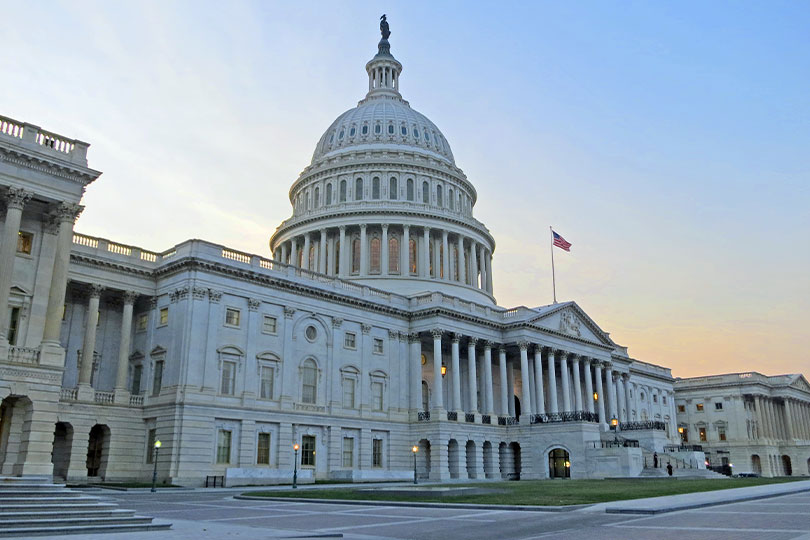By Jessica Domel
Multimedia Reporter
Republican and Democratic members of the U.S. House Committee on Agriculture recently emphasized the importance of a new farm bill in a hearing with U.S. Secretary of Agriculture Tom Vilsack.
Committee Chairman GT Thompson (R-PA) said America’s farmers, ranchers, foresters, rural communities and every day consumers need the government to work for them–not against them.
“These men and women have struggled with fractured supply chains, considerable input costs, relentless inflation, natural disasters, volatile markets and labor shortages—each consistently worsened by ill-conceived half-baked execution action,” Thompson said.
The chairman expressed concerns with taxpayer dollars being sent to other countries while the United States is not producing more fertilizer, reducing the cost of production or making food more affordable.
“We are burdening the taxpayer. We’re losing ground on the world stage,” Thompson said. “We are a net agricultural importer. We are less independent, less resilient and less competitive.”
The farm bill, according to Thompson, is the best opportunity to course correct.
“Congress can and must craft a bipartisan farm bill that aligns the farm safety net with the needs of producers, expands market access and trade promotion opportunities, strengthens program operations to demand transparency and accountability to the taxpayer, and reinforces not only the importance of helping our neighbors in need, but doing so without indiscriminate expansion of our nutrition safety net,” Thompson said.
Rep. David Scott (D-GA), committee ranking member, underlined House Democrats’ priorities for a farm bill.
“We want to reduce hunger, strengthen America’s farmers, invest in sustainable agriculture, revitalize rural American, lower costs for farmers and families and improve equity,” Scott said.
Republicans should put aside any plan that includes cuts to the Supplemental Nutrition Assistance Program (SNAP), Scott said.
“Whether you call it a ‘cut’ or a ‘reduction of future benefits,’ Democrats oppose it,” Scott said. “I understand my Republican colleagues are concerned about spending, at least when it comes to SNAP, but because the economy has improved, benefits and the need for the program has decreased.”
The Congressional Budget Office, according to Scott, is now expecting SNAP to cost $67 billion less over the next decade than originally expected.
“Let’s put aside the proposal to take IRA (Inflation Reduction Act) conservation or energy funding away from its intended purpose,” Scott said. “Robbing Peter to pay Paul is not going to result in an effective farm bill. Those IRA programs are oversubscribed, so we should not take funding from them to pay for other farm bill priorities.”
Both Thompson and Scott expressed their desire to create a bipartisan farm bill to provide certainty for the nation.
Vilsack said it’s fair to say that every farmer, rancher and everyone who lives in rural American depends, in large part, on the farm bill.
“It’s a rural development bill. It’s a conservation bill. It’s a nutrition bill. It’s a research bill. It’s a trade bill. It’s a risk management bill,” Vilsack said. “It’s a broad opportunity to say to rural America and to American agriculture that we care, that we’re investing in their future, and we’re providing stability.”
The failure to have a farm bill, according to Vilsack, creates uncertainty, which makes it very difficult for producers to make decisions about their operations.
The farm bill is one of Texas Farm Bureau (TFB) and the American Farm Bureau Federation’s (AFBF) priorities this legislation session.
“Obviously we wish we could have gotten a farm bill done in 2023, but with Congress in their backlog of things they need to get done, it just hasn’t happened yet,” Laramie Adams, TFB associate director of Government Affairs, said. “We’re thankful that we do have an extension now, but I think the biggest priority for us is making sure that we strengthen the farm safety net.”
U.S. farmers are dealing with higher input costs and higher costs of equipment and fuel.
“We are talking about updating reference prices. That hasn’t been done in a number of years, and we have to make sure that our farm safety net is keeping up with the challenges that our farmers are facing,” Adams said. “We’re going to continue to talk not only with the chairman of the House Ag Committee and Senate Ag Committee and the ranking members and their staff, but also just educating our delegation.”
Thompson believes March will be the best time to get the farm bill done.
“Those are the first two or three consecutive weeks,” Adams said. “It has to be in March.”
The current farm bill extension expires at the end of September.
“I think if we do not get a new farm bill passed in March or soon after, it will be hard to get it done before the November election. In that case, we would have to ensure the current farm bill doesn’t lapse after Sept. 30 of this year. It is possible to get a farm bill passed in the lame duck and we will continue to stress the importance of doing so, as long as there are additional investments in the farm program side of the legislation,” Adams said.
Another extension of the 2018 Farm Bill could create issues for U.S. farmers and ranchers.
“There are negative consequences just from the standpoint of we’re not addressing the needs,” Adams said. “Ideally we’d get this done, but we have to wait to make sure we’re not just continuing with the current status quo on the farm bill in order to get some additional resources into what we need.”


Leave A Comment